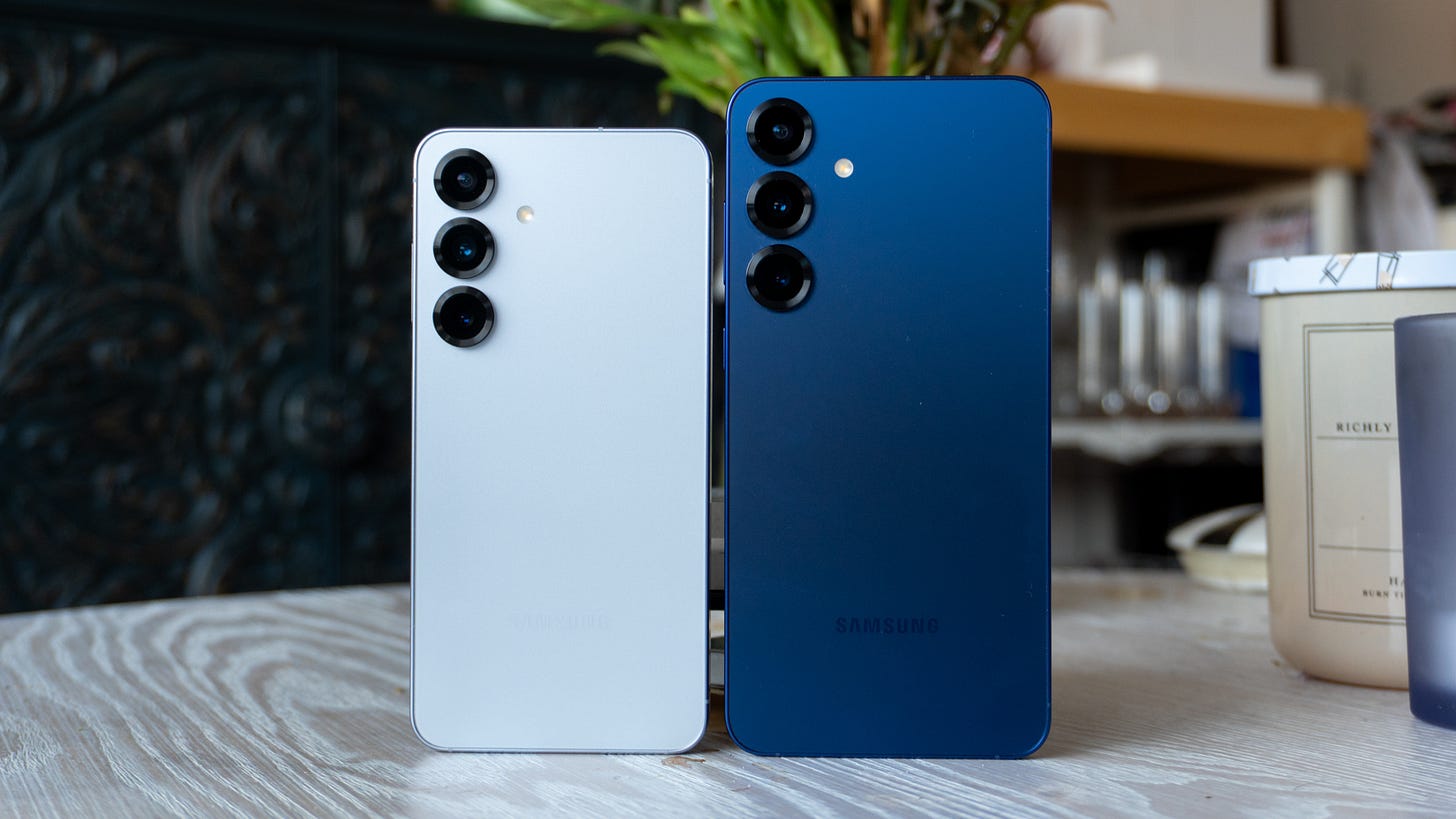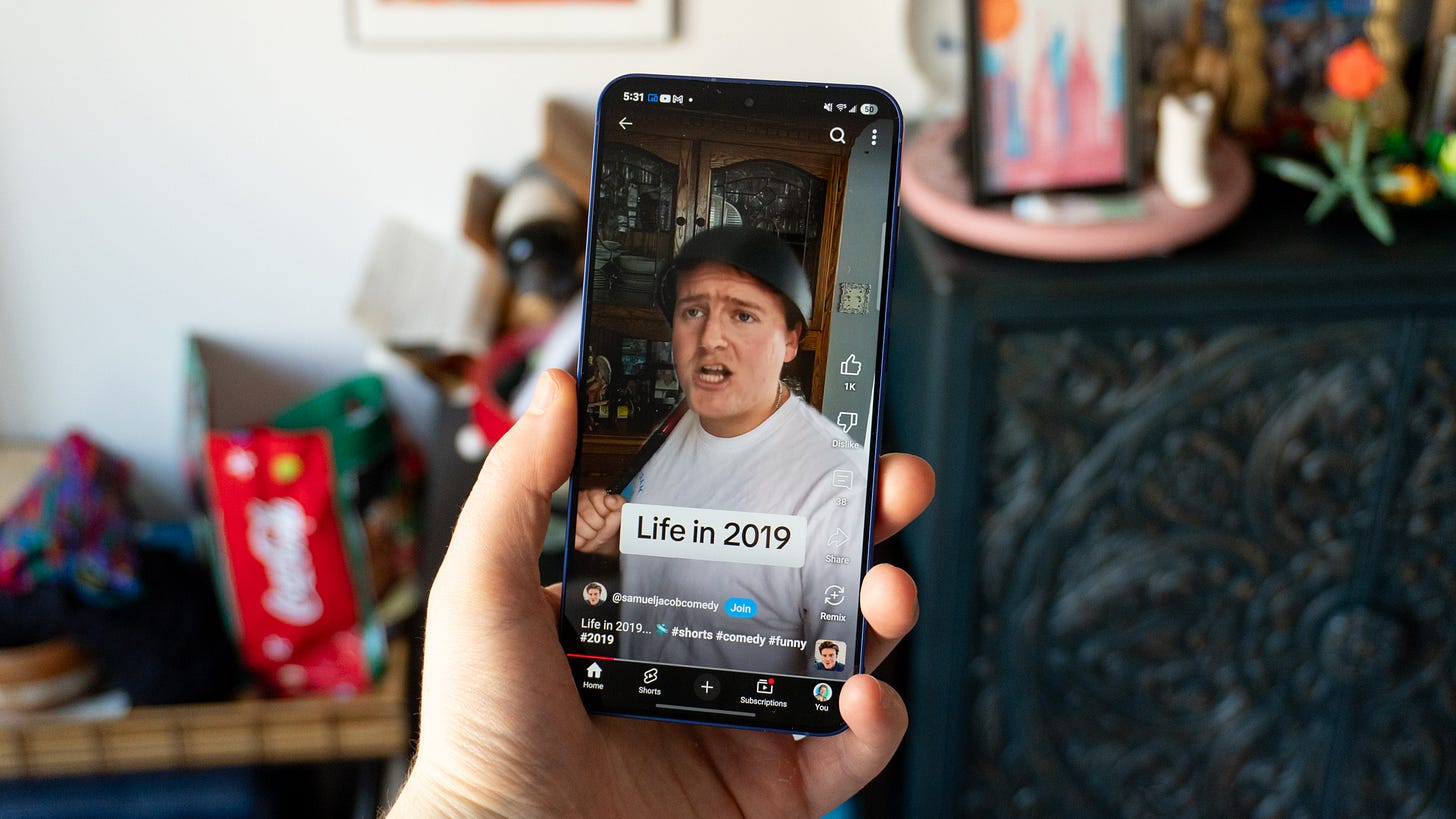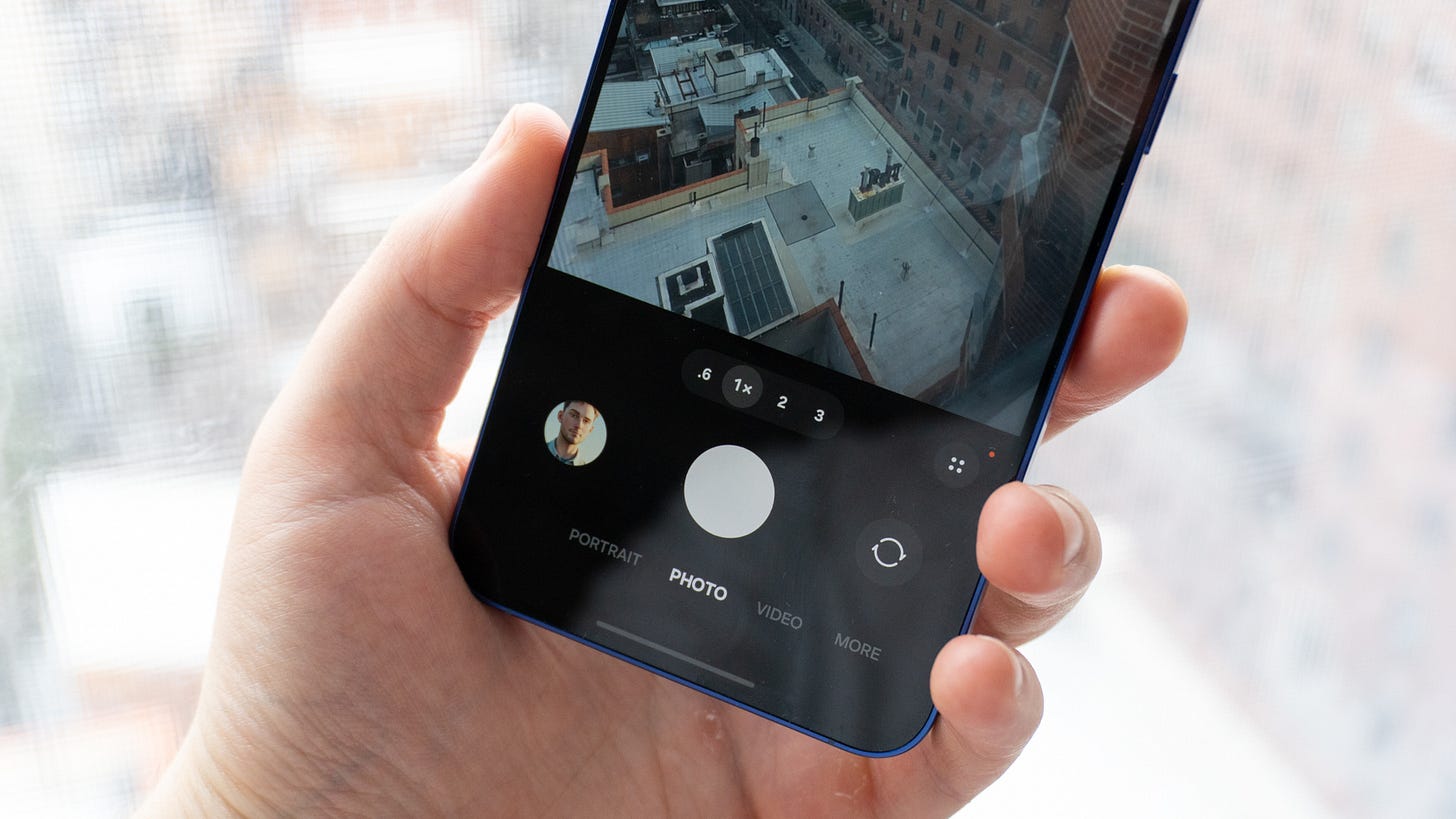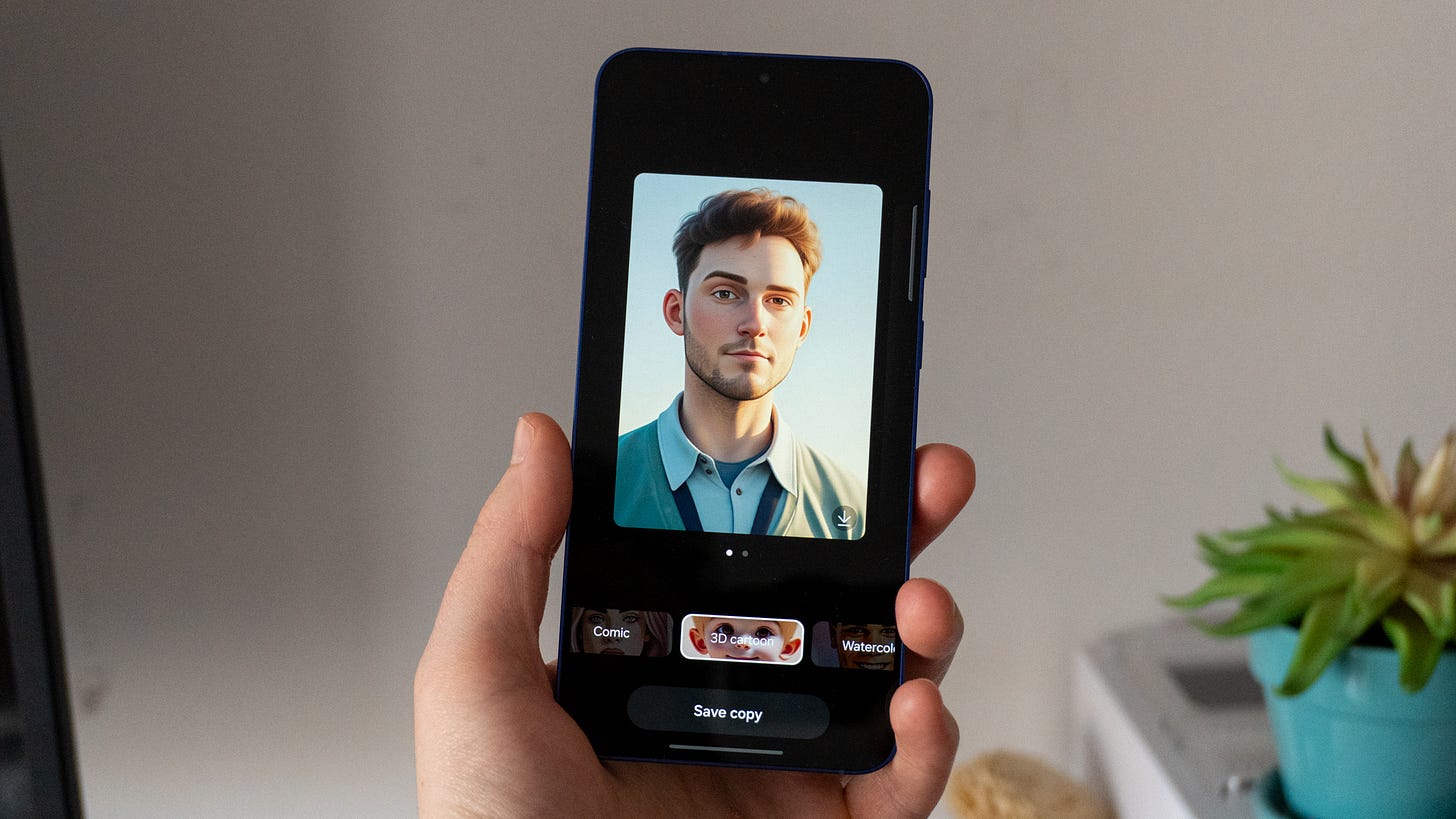Samsung Galaxy S25 review: it’s the same, but with AI
Samsung’s S25 and S25 Plus are solid phones, but their reliance on selling you AI is silly.
🏆 Review score: 4/5
✅ Pros
📱 Beautiful polished display
🏎️ Super-fast performance thanks to Snapdragon 8 Elite
🔋 All-day battery life with fast charging
🤖 Galaxy AI can come in handy
📆 7 years of software updates
📸 Good cameras
❌ Cons
📐 Boring design
🎥 Video quality needs improvement
🌙 Nighttime photos can be hit or miss
🥱 Some AI features are forgettable
The Shortcut review
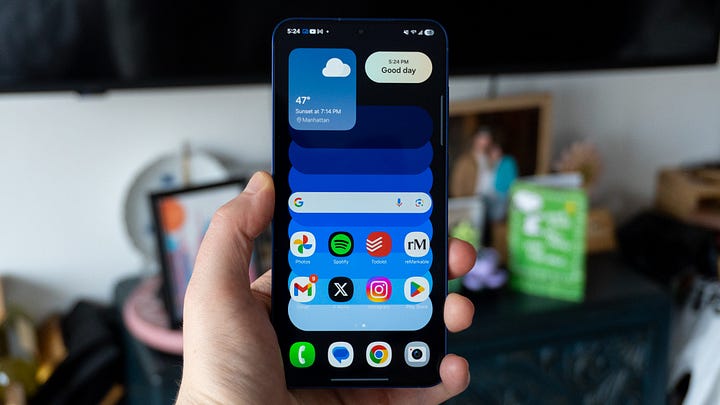
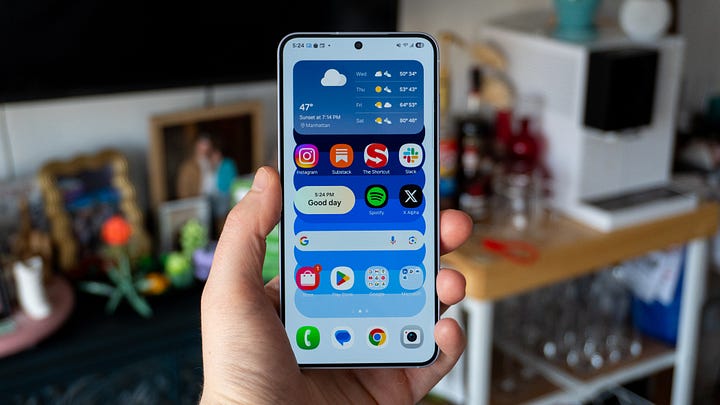
I've been reviewing phones for nearly 10 years, and the incremental upgrades that Samsung made to the new Galaxy S25 and S25 Plus are some of the smallest I've seen year-over-year. The new Android phones, which start at $799 and $999, respectively, are the best Galaxy S devices yet. But there's no question: these are last year’s S24 and S24 Plus with a fresh coat of paint, a couple of spec bumps, and Galaxy AI.
Most people (if not all) won't be upgrading from a Galaxy S24 device, so it's not necessarily a huge deal that Samsung has done so little this year. Look to our Galaxy S25 Ultra review if you want the coolest Samsung phone, the one with the stylus, the one with 100x Space Zoom. The standard S25s are here if you need a new phone because your current phone is getting old.
These are good phones with great performance, beautiful designs, and all-day battery life. They also come with Samsung's latest set of Galaxy AI features, helping the phones better target the iPhone 16 and Apple Intelligence. But we had a lot of this already when we played with the Galaxy S24 last year. It's not a big year for the Galaxy S series by any means, but at the end of the day, Samsung has delivered another set of solid phones that are worthy of your money, so long as an S Pen and advanced cameras aren’t too tempting.
Full review
Design
👀 Déjà vu. You’re not the only one who thinks the Galaxy S25 looks just like the S24. From the outside, you can barely see the difference. Samsung just flattened the sides a bit and added some new colors. The camera layout is the same, the buttons are the same, you still get a USB-C port and speaker on the bottom, and the physical SIM tray is still around. It definitely gives iPhone energy more than previous Galaxy S phones I’ve used, but it’s still a Samsung phone at heart, one that we’re all too familiar with.
🌊 Waterproof enough. Both the S25 and S25 Plus are IP68-certified for water and dust resistance, which helps with durability. But, as seen in our OnePlus 13 review, you can get a more accident-resistant IP69 Android phone for $999.
🛡️ Second-best glass. Samsung uses Corning Gorilla Glass Victus 2 on the front and back of the 6.2-inch S25 and 6.7-inch S25 Plus and an aluminum frame. It’s durable, but you’ll have to spring for the S25 Ultra if you want Corning Gorilla Armor 2 glass and a titanium frame.
🎨 Bold color choices. There are seven Samsung Galaxy S25 colors. I have the Navy S25 Plus and Icy Blue S25, and they’re by far my favorites in the lineup. The Mint and Silver Shadow finishes are also nice, and the Samsung.com exclusive Blueblack, Coralred, and Pinkgold are perfectly vibrant for the boldest among us. By comparison, the Galaxy S25 Ultra colors are rather weak.
📐 Lightweight and pretty slim. It’s worth mentioning how thin and light these phones are. The S25 comes in at 162 grams while the S25 Plus is 190 grams, and both are a hair thicker than 7 mm. They both feel like nothing in your hand, which makes me think the upcoming Galaxy S25 Edge will truly feel weightless and razor-thin when it’s released later this year.
Display
📱 Beautiful screens with thinner bezels. Samsung makes some of the best displays in the business, so it makes sense that the Galaxy S25 and S25 Plus’ screens are stunning. The two Dynamic AMOLED 2X panels come with sharp resolutions, 2,600 nits of brightness, and vivid colors. You’ll love using these screens for everything from reading Kindle books to watching March Madness on the go.
📺 The 120Hz effect. Samsung has been including 120Hz refresh rates on its flagship phones for a while, and all three Galaxy S25 phones come with it. This helps tremendously with keeping animations, scrolling, and more silky smooth, making your phone feel more responsive than devices with 60Hz screens. Apple is expected to finally bring the same technology to the iPhone 17 and iPhone 17 Air this year, so Samsung won’t have an edge over Apple’s regular flagships anymore when it comes to displays. That’s perfectly fine – it means you can buy the latest Galaxy or the latest iPhone and get a fast 120Hz display.
Specs and performance
🏎️ Elite speeds. The Galaxy S25 and S25 Plus come with the Snapdragon 8 Elite for Galaxy processor, a special variant of the regular 8 Elite we saw in phones like the OnePlus 13 with extra performance and efficiency optimizations. Like in the Galaxy S25 Ultra, this chip is fast. Like, really fast. These are some of the fastest phones I’ve ever used, with excellent response times to my taps, quick app loads, great multitasking, and plenty of power for gaming. The Snapdragon 8 Elite is a big improvement over the Snapdragon 8 Gen 3 from the Galaxy S24, and it’s nearly as fast as the A18, as seen in our iPhone 16 Pro Max review.
🧊 Cooling off is never a problem. Part of the reason the phone is so fast and can maintain its speed is the vapor cooling chamber, which Samsung made 15% bigger this year. It allows for better ventilation and easier heat dissipation to keep the chips cool, even under heavy workloads. The only time I felt the S25 and S25 Plus get warm was during setup when I was downloading all my apps, then another time when I had very little cellular reception. Other than that, these phones kept their cool during my review process.
👾 Plenty of RAM and storage. Samsung pairs the Snapdragon 8 Elite with 12GB of RAM in both of these phones, which gives them a ton of headroom for keeping apps running in the background and using AI features in One UI. You also get plenty of storage: both can be configured with 256GB or 512GB of space, while the regular S25 also has a 128GB tier if you want to save some extra cash. The storage is also really fast; it uses UFS 4.0 flash storage for quicker read/write speeds.
🔒 Fast fingerprints. The ultrasonic fingerprint scanner on the Galaxy S25 remains one of my favorites across the smartphone industry. It’s quick, it’s accurate, and it’s easy to remember where it’s located under your screen. It’s also somehow faster than the ultrasonic sensors on the Pixel 9, Pixel 9 Pro, and OnePlus 13.
Cameras
📸 ‘Samsung’ written all over the place. Samsung has a very particular way of processing photos. Its algorithm always increases saturation, boosts contrast a bit, and tries to gently overexpose everything so that the image feels even. The Galaxy S Ultra series has stepped away from these practices in order to produce more natural-appearing photos, but not the regular Galaxy S lineup – the S25 and S25 Plus are still kicking out Samsung-looking photos, despite there being a new ‘ProVisual Engine” that’s supposed to improve photos by a wide margin.









Main: At least the quality of the cameras on the S25 lineup is solid. That starts with the 50MP main shooter, which includes an f/1.8 aperture and dual-pixel phase detection autofocus. It’s easy to snap a quick pic that’s suitable for sharing right to Instagram. In broad daylight, images are crisp and full of detail, while colors and objects are generally well-preserved in low-light scenarios.
Telephoto: With the 10MP f/2.4 telephoto lens, you can zoom in 3x without losing quality and up to 30x with hybrid zoom. It’s not as impressive as the 120x Space Zoom on the S25 Ultra, but it’s good enough if you need to get close to a subject without sacrificing too much quality. I found that photos looked best during the day and struggled a bit to keep up in low light, especially if your grip isn’t that sturdy.
Ultra-wide: The ultra-wide camera is the least exciting camera on the S25 and S25 Plus. The 12MP f/2.2 lens has a 120-degree field of view for capturing more of a scene in a single photo, but it can’t pick up as much light or detail as the other two cameras. By comparison, photos are generally darker and not as colorful. I don’t recommend using it in a dark bar, that’s for sure.
Selfie camera: The 12MP selfie camera is a decent shooter for most conditions but easily falls apart at night with weird color reproduction and inaccuracies in exposure. It’s not the worst thing I’ve ever seen, but you’ll have better results with selfies on the Pixel 9 and iPhone 16 series.
Video: Like photos, Samsung processes video on the regular Galaxy S series in a weird way with over-sharpening and colors that are too vibrant to look appealing. While the S25 and S25 Plus can capture good-looking 4K videos and are capable of video up to 8K in resolution, the results are still a few paces behind the iPhone 16, which remains the king of smartphone videography (at least in North America).
Vibe check: While photo and video quality are generally good on the Galaxy S25 series, you can do better. The Pixel 9 will kick out more natural-looking photos with much better video quality, while the OnePlus 13 offers more robust hardware for capturing some great-looking portraits and zoom photos. These cameras aren’t bad by any means, but there’s plenty of room for improvement, room that’s been sitting there for years and has only been utilized on Samsung’s most expensive S Ultra series.
Battery life
🔋 All-day battery life. The Galaxy S25 and S25 Plus can cruise through a full day on a charge. The 4,900mAh battery in the S25 Plus is especially good at lasting all day, with around 30 %t left in the tank by the time I go to bed, which is usually after 16 hours of moderate to heavy use. Meanwhile, the S25’s 4,000mAh battery is much closer to dying with around 5-10%in the tank with the same usage, but it still technically lasts all day.
🔌 Charging is pretty snappy. Both Galaxy S25s support 45W fast wired charging, which can juice them up from zero to around 65%t in half an hour. Samsung has supported 45W charging on its phones for years now, outpacing both Apple and Google, whose devices charge at around 20-35W. That’s a big advantage if you need fast charging, although it’s not quite as fast as the 80W charging on the OnePlus 13.
⚡️ Qi2-ready. Samsung’s latest phones are Qi2-ready, which means that the phones technically support 15W wireless charging.
🧲 But no MagSafe. However, the entire point of Qi2 is bundling both quicker wireless charging and magnets so that you can connect MagSafe accessories to the back, just like on the iPhone. The “Qi2-ready” brand means that faster wireless charging is there, but, annoyingly, you need to buy a special case if you want magnets – or wait for the Samsung Galaxy S26 to launch.
⏮️ Flip it in reverse. The Galaxy S25 and S25 Plus both support reverse wireless charging as well, allowing you to flip them over and charge a pair of earbuds or Galaxy Watch using the battery inside your phone. Speeds are still limited to 4.5W, but it’s nonetheless convenient if you need extra juice in your headphones.
Software and AI
✨ The great Galaxy AI takeover. One UI 7, which is based on Android 15, focuses heavily on AI to help convince you the Galaxy S25 is a brand-new phone you should buy right this instant. It’s also here to help Samsung go head-to-head with other systems like Apple Intelligence, incorporating features like writing tools, image generation, live translation for spoken conversations, webpage summarization, an audio eraser for noise in videos, and some questionable features like the Now Brief.
🤷 Most AI is meh. I’ve toyed around with a lot of the AI, as has my boss who reviewed the S25 Ultra. All of the features seem to work the way you’d want them to: you can generate emails easily, you can edit photos and remove people with a few taps, the audio eraser cleans up noise levels well, and it’s easier than ever to summarize long articles (like this one). Personally, I have yet to find an AI feature that compels me to use it every day, but the system Samsung includes has enough to play around with to introduce you to the company’s version of AI.
🗣️ Natural language and string commands. The two Galaxy AI features that did come in handy were natural language support and the ability to string multiple commands together. I’ll explain.
With natural language, you can talk to your Galaxy S25 like you would to a human. If you’re in the Settings app, you can search for “the switch for dark mode” or “my volume is too high” to be presented with the toggles you’re looking for. Powered by Bixby (yes, that Bixby), you can also look up files on your phone with the same natural language, apps you’ve misplaced, or general information on the web.
The ability to string multiple commands together is really convenient if you want to save time. For example, you could say “look up the best Italian places around here and send them to Chloe.” Your S25 will then find a list of the highest-rated Italian restaurants in your area, then send them to the contact of your choice, all without any manual labor. The feature takes a second to work, but in my testing, it worked each time I asked.
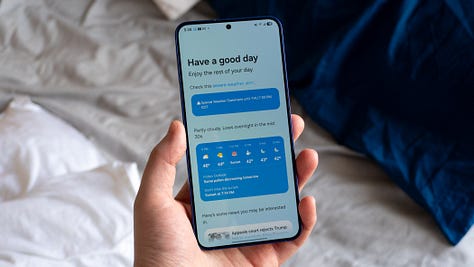
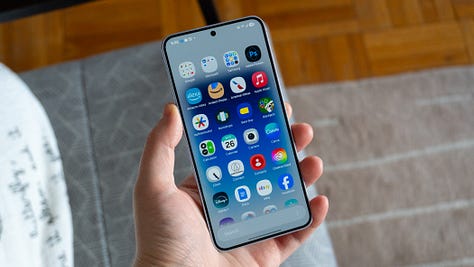
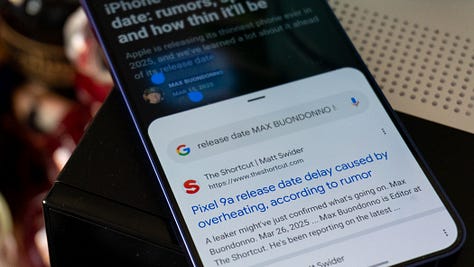
🗞️ Now Brief is pointless. The award for Most Pointless AI goes to Samsung’s Now Brief. It’s supposed to be a daily summarization of important information you should know about, but instead, it’s just the weather with a few crappy headlines. Maybe it’ll get better over time, but right now, I find zero reason to ever use it.
🤙 Clean, responsive, and less cartoon-ish. The rest of One UI 7 is surprisingly delightful. I haven’t enjoyed using Samsung’s software in a while, and this new version of the system feels like a breath of fresh air. Everything is clean and tidy, menus are laid out nicely, and the iconography feels less cartoonish. I also enjoy the new Now Bar feature on the lock screen and status bar, which can show you live information like Apple’s Dynamic Island and Live Activities on the iPhone. From the home screen to the settings page to the folder design, One UI 7 is a delight to use.
📆 Seven years. That’s how long Samsung is promising to update the Galaxy S25 series. This includes not just security updates but major software upgrades as well, so the S25 you buy will likely be updated all the way to Android 22. With the performance improvements and efficiency of these phones, I’d say they’ll be running just fine 5+ years down the line.
Tidbits
Here are a few extra notes I had from my time with the Galaxy S25 and S25 Plus.
The speakers are loud but lack enough bass to compete with what you get from the iPhone 16 Pro.
The vibration motor isn’t as nice as what’s on the Pixel 9 or OnePlus 13.
Microphone quality was great. People can hear me clearly on voice calls.
Despite the big screen, the Galaxy S25 Plus is surprisingly easy to handle with one hand.
Should you buy the Galaxy S25 or S25 Plus?
Yes, if…
✅ You own a Galaxy S22 or earlier and want to upgrade
✅ Your current Android phone is on its way out
✅ You want three rear cameras
✅ You need all-day battery life
✅ You want seven years of software updates
✅ You want reliable performance
No, if…
❌ You need the best cameras available (get the Pixel 9 Pro)
❌ You want ultra-fast charging (get the OnePlus 13)
❌ You’re tired of Samsung’s design language (get the Pixel 9 Pro or OnePlus 13)
❌ You need multi-day battery life (get the OnePlus 13)
Max Buondonno is Editor at The Shortcut. He’s been reporting on the latest consumer technology since 2015, with his work featured on CNN Underscored, ZDNET, How-To Geek, XDA, TheStreet, and more. Follow him on X @LegendaryScoop and Instagram @LegendaryScoop.




